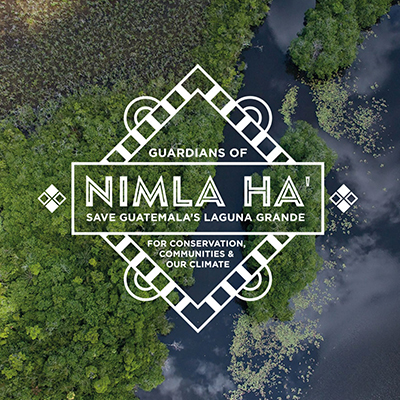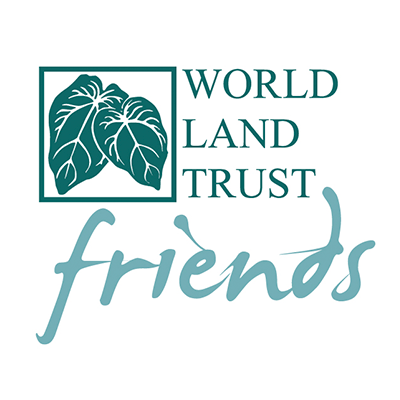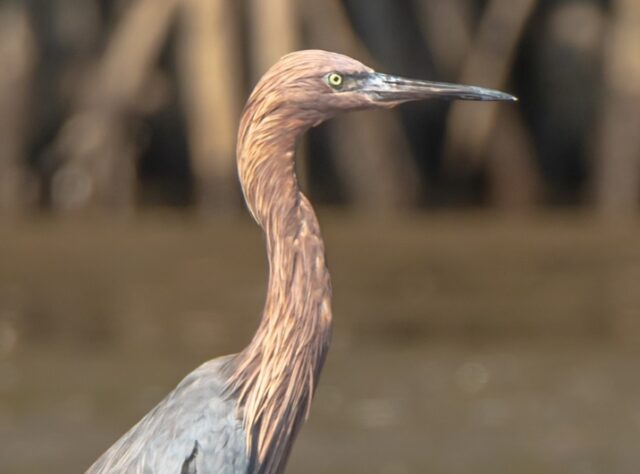
Donations to our Guardians of Nimla Ha' appeal will help save thousands of acres of habitat for 100+ migratory bird species like the Reddish Egret, a heron famous for its dance-like displays as it feeds on prey in shallow water. Credit: FUNDAECO Archive
The tropical home of 700+ species, a major carbon sink and hurricane barrier; all of that and more is at stake in Laguna Grande. Doubled by our Big Match Fortnight (BMF) until the end of 19 October 2021, your donations to our new Guardians of Nimla Ha’ appeal will help to triple the size of our partner FUNDAECO’s reserve in Caribbean Guatemala. This is the story of a unique web of wetlands, lagoons, forests and mangroves key to the fortunes of scores of migratory birds in the Americas – and what World Land Trust (WLT) supporters can do to help protect it on World Migratory Bird Day.
Nature always finds new ways to remind us how much we’ve yet to learn about it – even conservation veterans.
Alexis Cerezo might have spent years studying Guatemala’s staggering bird life but he still finds cause for wonder out in the field. “The sheer precision of migratory birds never ceases to amaze me,” says Alexis, Biological Research Coordinator of Guatemalan conservation body Foundation for Ecodevelopment and Conservation (FUNDAECO). “Take the Wood Thrush. We’ve had cases where we’ve checked the birds we had captured at a specific spot for ringing and releasing, and realised that these were the exact same individuals we had seen years back, returning to the very same spot all the way from North America.”
Exactly how crucial this stretch of Central America is to bird migrants becomes transparent on every level of the geographic chain. An astounding 190 species – or 54% of all the species that migrate southwards from North America every year – stop at Guatemala for part of, or the entirety of the boreal winter. Zoom into Caribbean Guatemala, a mere 7% of the country’s landmass, and you will find 87% of all terrestrial migrants nationwide. Zoom further into Laguna Grande by the border with Belize, and you will find 109 migratory bird species, both terrestrial (74) and aquatic (35).

An astounding 357 of Guatemala’s ~800 bird species have been confirmed as present in Laguna Grande, making its protection crucial in an area where 80% of lowland forest has already been razed. Credit: FUNDAECO Archive
As head-turning as these numbers are, they don’t do justice to what it is to visit Laguna Grande. Alexis, himself a self-professed ‘twitcher’ who has gone birdwatching at home in Guatemala City almost daily during the national lockdown, is enthusiastic as he describes trips to this magnificent chain of forested lagoons, wetlands and mangroves in Guatemala’s tropical east. “The sheer volume of avian life you find in a short time here is startling,” he says. “It’s not just the diversity that comes with a lowland tropical forest alone; it’s the combination of that and the aquatic environments in the area.”
If this is an irreplaceable landscape, the threats facing it are no less momentous. Caribbean Guatemala has already lost 80% of its lowland forests to logging for timber and cattle ranching. To stop Laguna Grande going the same way, our Guardians of Nimla Ha’ appeal is now offering a chance to WLT supporters like you to save this one-of-a-kind landscape. Named after the nimla ha’ or ‘great waters’ in the language of local Maya Q’eqchi’ people, our campaign will fund FUNDAECO’s expansion of their Laguna Grande Reserve from 1,668 to almost 5,000 acres; a tripling of the reserve’s size that will see land protection cover the entire ring all around the lagoon.
Manatees, jaguars, species by the hundreds including scores of migratory birds – all can see their home protected for posterity this year, if WLT supporters join us.
Songbirds, swifts, egrets flock to tropical haven by the great waters
Generalising about the hundreds of bird species that visit Laguna Grande every year is a tough ask, but some common patterns do apply.
The first is timing. North American bird migrants typically start reaching the lagoon shores by late August; between mid-September to mid-October – by the time our Big Match Fortnight is fully underway – all species big and small expected to have shown up will have done so. Some may fly on southwards and some may spend the whole boreal winter in Laguna Grande – but both groups will start making their way back to North America at around late March. By the end of May, the vast majority of Laguna Grande’s seasonal visitors will be gone.

With Big Match Fortnight doubling all donations until the end of 19 October 2021, our appeal will fund our partner FUNDAECO’s tripling of a reserve for the benefit of Prothonotary Warbler and the other species that visit every year. Credit: FUNDAECO Archive
The second common thread is origin and like the Wood Thrush who returned to be found by Alexis at the same exact spot years on, Guatemala’s bird migrants are creatures of habit. “We find that most species who fly all the way to Caribbean Guatemala and Laguna Grande tend to come from eastern North America, while their western counterparts choose instead Guatemala’s highlands to the west,” Alexis says. “We don’t know why this is for certain but these are patterns shaped by thousands and thousands of years, possibly species segregation by way of competition dynamics.”
There is so much to choose from with the riot of bird life that reaches Guatemala after travelling southwards along the Central Americas flyway, one of eight such major corridors for birds worldwide. And yet FUNDAECO have managed to single out standout species by combining International Union for Conservation of Nature (IUCN) Red List assessments with the Americas-focused Continental Importance Watchlist by Partners in Flight. By using both lists as a joint compass, people like Alexis can shine a light on the bird highlights of a landscape like Laguna Grande.
Some, like the Kentucky Warbler, are remarkable in their sheer abundance. As Alexis explains, if one could see all of Laguna Grande’s annual bird migrants in one big cluster, 25% would be individuals of this songbird with olive-green back and yellow underparts. A fellow New World warbler, the Prothonotary Warbler, is also seen often. Lighting up the forested shores of the lagoon, the males of this species boast similar hues to the Kentucky Warbler, albeit crowned by an orange-yellow head. “Prothonotary Warblers favour water-side forests like Laguna Grande’s so we find it relatively often,” Alexis explains.
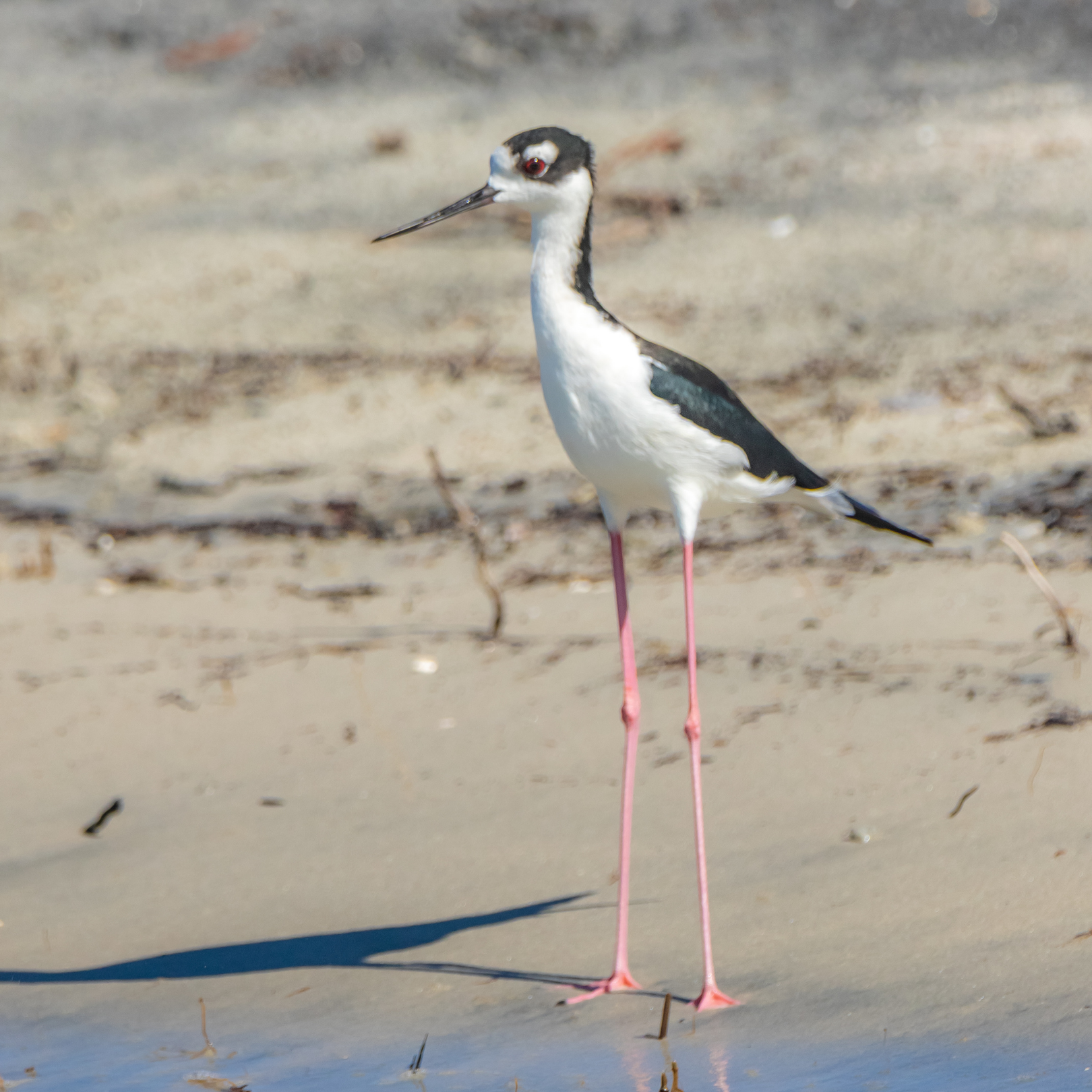
Laguna Grande’s wetlands attract migrants like the delicate Black-necked Stilts, a bird that can be seen wading on its remarkably long legs through shallow water as it forages for aquatic invertebrates. Credit: FUNDAECO Archive
All across the Americas, both warblers are classified as “D” Yellow species under Partners in Flight’s Continental Importance Watchlist, meaning their populations are declining. This is an unfortunate status they share with fellow Laguna Grande wintering visitors such as the white-and-blue songbird Cerulean Warbler, as well as two swift species also classified as Vulnerable in the IUCN Red List: the Black Swift and Chimney Swift, a seasonal presence in Caribbean Guatemala that cuts a slender, curving shape against the sky as these birds hunt, forage and socialise on the wing.
FUNDAECO’s list also spans the improbably named Chuck-will’s-widow, North America’s largest nightjar – their wingspan can reach 58-61 cm – known by its mottled brown plumage, flat head and repetitive, throaty call. The list includes the Reddish Egret, a medium-sized heron named after the rusty neck and head that caps off its slate-grey body. The species is famous for its dance-like displays as it feeds on prey in shallow water, and FUNDAECO was delighted to confirm its presence at Laguna Grande, Alexis says, adding: “To spot a species as rare as this is such a highlight for a birdwatcher.”
But of all Laguna Grande visitors, one holds particular sway for North America’s bird-lovers. Often celebrated as the performers of the “most beautiful bird song” on the continent, Wood Thrushes like the individual Alexis met year after year have already suffered major population losses, with a 59% drop found across their entire range since 1970. A lack of primary tropical forests to winter in could, researchers believe, force the species into secondary habitats and impair their fitness for the journey back – and this is where alliances to save landscapes like Laguna Grande come in.
Closing the circle of land protection for migratory birds, climate and communities
Decades of scientific research have cast much light on bird migrations but much remains yet to be discovered. What incredible maps does a Wood Thrush hold in its brain that allow it to navigate to the exact same spot by a Caribbean lagoon, down to the millimetre, after travelling thousands of miles? How exactly does a migratory bird read the seasons? How does it know which of all possible flyways will lead to wintering grounds, and how is that knowledge passed on to the next generation?
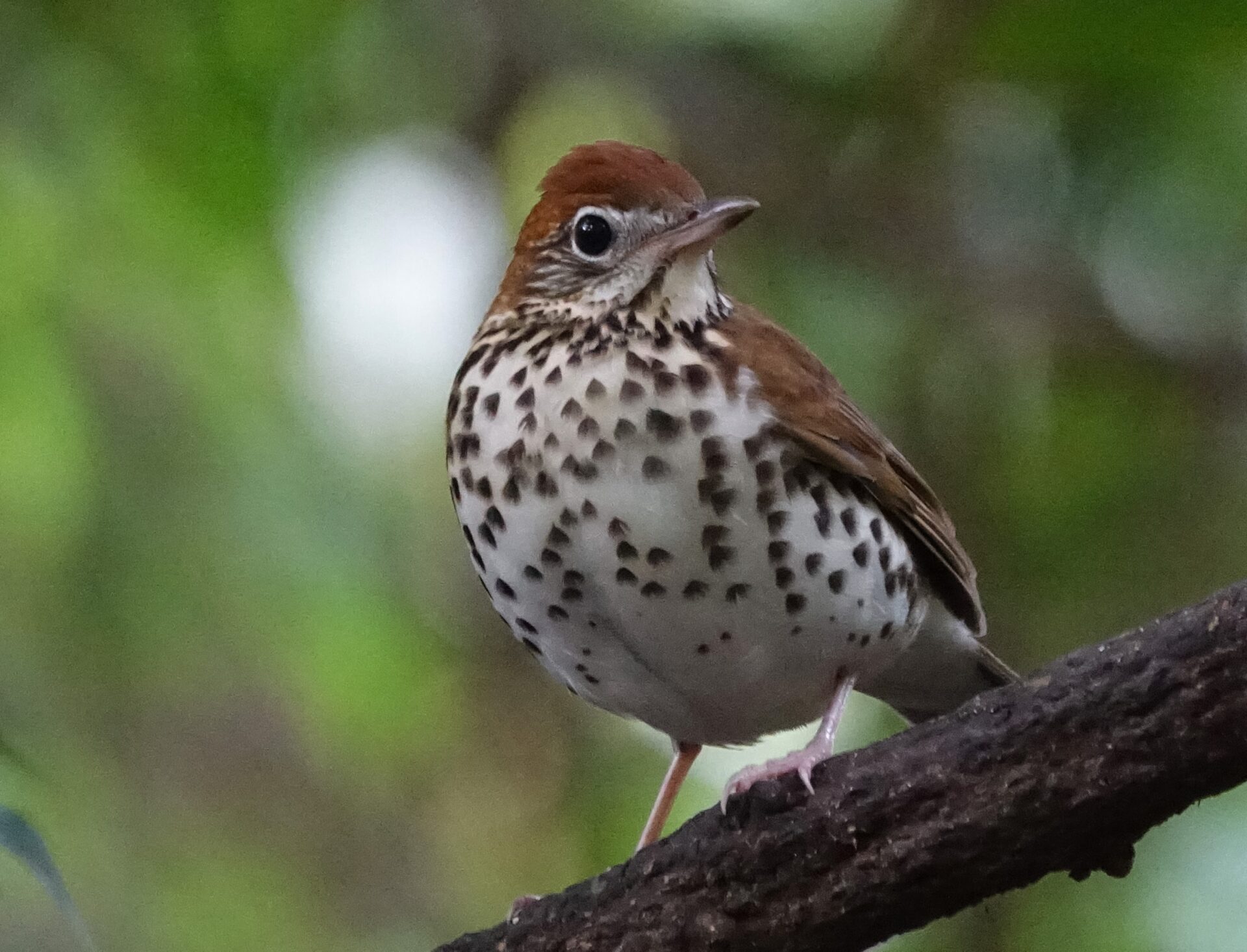
Even for veterans like FUNDAECO’s conservationists, the sheer precision of birds like Wood Thrush as they journey between North America and the exact same spot in Laguna Grande is a source of wonder. Credit: Wood Thrush by Mike’s Birds, CC BY-SA 2.0
In Laguna Grande and elsewhere, when habitat goes so does the chance to discover the ways of nature we don’t yet know about: the species yet to be mapped, the behaviours yet to be deciphered. FUNDAECO’s Alexis Cerezo offers another startling figure to convey the importance of this landscape by the Caribbean: “Guatemala harbours just under 800 bird species and of those, Laguna Grande has recorded sightings of 357, both migratory and resident. 357! It is incredible.”
“One of the reasons why there is so much at stake with Laguna Grande is this is a landscape that is particularly key to migratory birds,” Alexis goes on to say. “The parts of lowland tropical forest around the lagoon that don’t get flooded are the habitat where 50-70% of migratory birds end up when they visit. Unfortunately, they are also ideal, highly sought-after land for agriculture and cattle ranching. Places as intact as Laguna Grande are really threatened locally in Caribbean Guatemala. There’s just very little left.”
And yet protecting Laguna Grande is about much more than birds. In the year of COP26, as every living being on Earth braces for the climate disruption ahead, the lagoon is the sort of landscape that humans and animals alike will need as we journey into the uncertain future: a tropical home for 700+ species, a hurricane barrier for local people, a web of rich carbon sinks to mitigate global warming and a safe stopover so that migratory birds like the Wood Thrush can thrive – its song forever heard at either end of an epic trek through America’s flyways.
Since time immemorial birds have travelled from North America to wintering grounds like Laguna Grande in Caribbean Guatemala, an arduous journey in search of shelter from colder weather.
For the birds undertaking this seasonal migration along America’s great flyways, places like Laguna Grande are growing scarcer. As more and more habitat is razed for timber, agriculture and cattle ranching, this lagoon remains a near-intact bird haven, home to 357 of Guatemala’s ~800 bird species – including 100+ migratory species.
